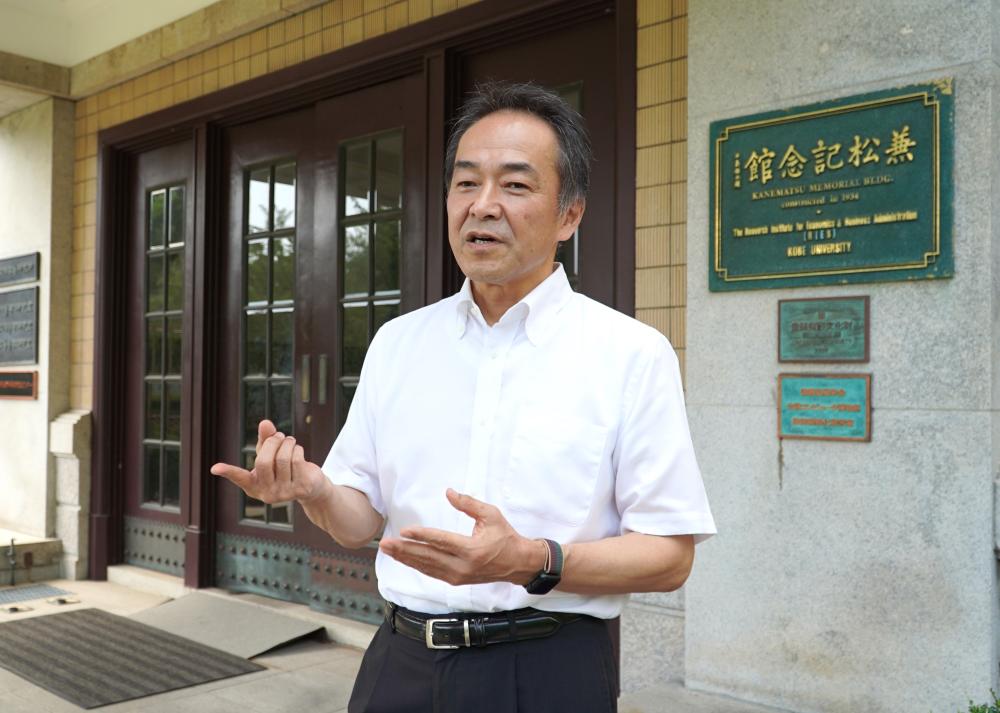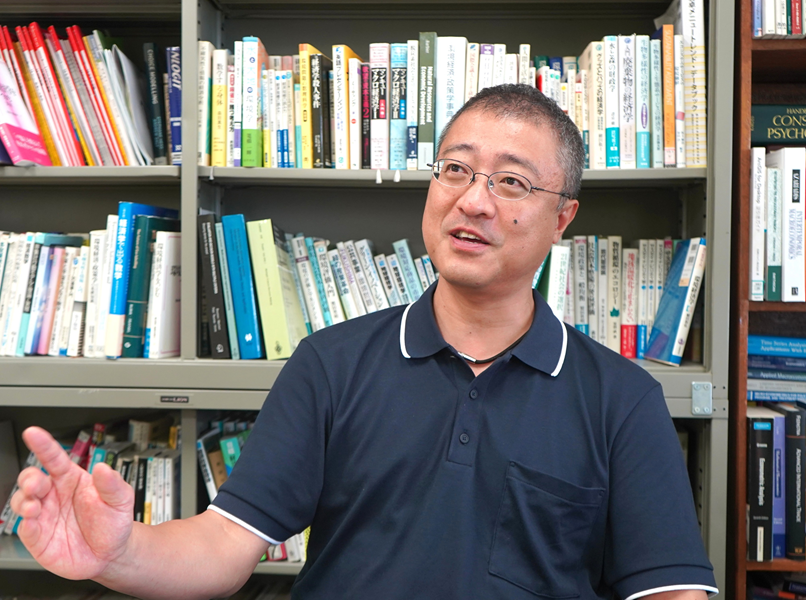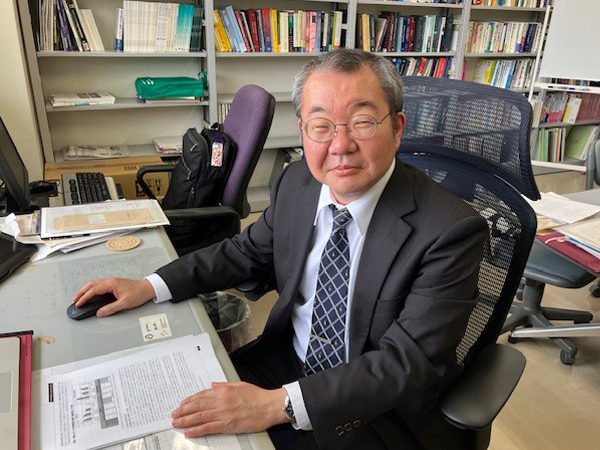What is the social impact of longer life expectancies, low birth rates and an aging society? How will the industrial structure change, and what sort of policy responses do we need? Professor Tomoko Kinugasa is using macroeconomic methods to investigate these pressing issues faced by Japan and other countries across the world. Using analysis methods such as the overlapping generations model and data-based empirical research, her work provides valuable policy advice for rejuvenating agriculture in the face of a shrinking population.
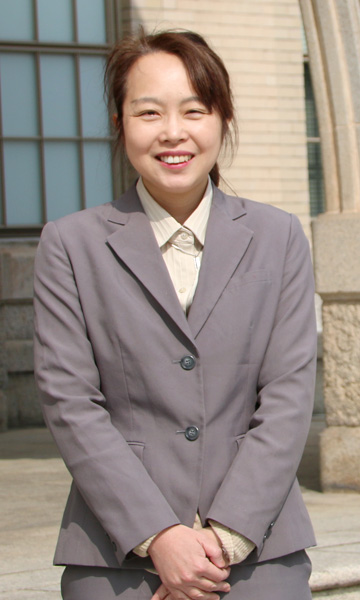
What is the “overlapping generations model”?
Professor Kinugasa:
It’s a macroeconomics model that recognizes the existence of different generations. Workers are the key to production, and past economic models assumed that everyone was a worker. The overlapping generations model takes into account the existence of other generations in addition to the workers – a younger generation and an older generation who do not work. This theory has been used since the late 1960s by renowned economists such as Paul Samuelson to analyze consumption and savings, and now it is being applied to analyze the impact of changes in population, aging populations, and longer life expectancy on economic activities.
You’ve analyzed the effects of longevity on savings.
Prof. Kinugasa:
We used to assume that consumption is tied to income, but in fact consumption does not increase at the same rate as income. The overlapping generations model considers an individual’s lifetime earnings are distributed between consumption and savings. We do not spend everything we earn – we also put some of our income into savings in preparation for our old age (the life-cycle hypothesis).
When life expectancy increases, we can predict that the amount of money put into savings will increase. I used data from sources including the World Bank to quantitatively analyze this phenomenon.
I was able to confirm that in Europe, Australia, Japan, and Korea, as life expectancies became longer, savings also increased. However, the data for developing countries in Asia and Latin American did not show an increase in savings. This may be linked to the family support systems in these countries, in which children look after their aging relatives.
If savings increase alongside life expectancy, what impact will this have on the economy and society?
Prof. Kinugasa:
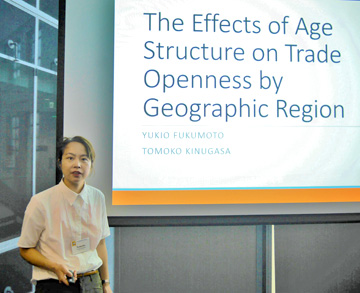
In Japan savings rapidly increased after World War II, particularly in the period of rapid economic growth. Personal savings were invested in industry via financial systems, and correlated positively with economic growth. Nowadays average life expectancy and average savings are both gradually increasing.
The working generation are increasing their savings in preparation for old age, but at the same time members of the older generation are digging into their savings and starting to spend. I used data from developed western nations, Japan and Korea to show that the speed of life expectancy increase also has a large impact on the rate of increase in savings.
Can the overlapping generations model be applied to research in other fields?
Prof. Kinugasa:
I’ve recently started working on research that looks at population and trade. The impact on trade caused by changes in population demographics can be examined using the trade openness index. This index calculates export prices + import prices / GDP, and looks at how much a country is dependent on foreign trade. We can predict that the trade openness index will be lower in countries with lots of children and elderly people. This is because very young and very old people are consumers of services that are difficult to trade, such as education, medical care and nursing. In countries with a high production-age population, the trade openness index will be higher.
I analyzed global data for trade and population demographics and confirmed the trends above. This revealed that the post-war globalization of Japan was not only caused by free trade international systems such as GATT and the WTO, but was also linked to changes in population demographics.
In highly developed countries birth rates are falling alongside the rise in life expectancy, and Japan’s population has started to decrease. When societies are in the development stages infant mortality is high, and to balance this people give birth to many children – a high birth and high death rate. As medical treatment develops and nutrition improves, the death rate and the birth rate both fall, a phenomenon known as “demographic transition”. When countries develop more advanced economies, the importance of children as workers falls, and as social welfare improves people do not need to produce children to take care of them in their old age. Meanwhile the cost of having children increases, for example through the cost of education, and an increasing number of women entering the workforce also leads to a lower birth rate.
Japan’s aging society and shrinking population could place strains on the pension system, so we need to make efforts to increase the birth rate. However, it is difficult to make dramatic increases, so we must also consider how to soften the impact of the aging society and shrinking population. This could include strategies such as encouraging women and the elderly to enter employment, and ensuring thorough education to raise the quality of a diminished workforce.
I also suggest that we make use of the positive aspects of our longer lifespans. As life expectancy gets longer, a larger amount of savings are invested, which links to future growth. It is important to educate the elderly so they can make savings even in old age.
Will the importance of agriculture increase in the era of depopulation?
Prof. Kinugasa:
When a population shrinks and its savings decrease, overall capital will decrease too. This is a minus both for agriculture and other industries, but by creating and analyzing a macro model we can see that this will have a greater negative impact on non-agriculture industries. Even when income decreases, the demand for agricultural produce has low income elasticity – this produce is a necessity, so demand will not fall too low, and the relative importance of agriculture will increase.
Recently the social significance of agriculture has drawn attention with regards to the landscape and environmental conservation through water conservation. Japan has many mountainous areas which are difficult to develop but can be used for agriculture, so people are looking to agriculture as a way to ease population overconcentration. It’s also been shown through time-series data that agriculture can provide employment in times of economic downturn. Of course, it goes without saying that to make agriculture a growth industry we need policies that enable people to engage in agriculture as a stable employment.
What do we need in order to revitalize agriculture?
Prof. Kinugasa:
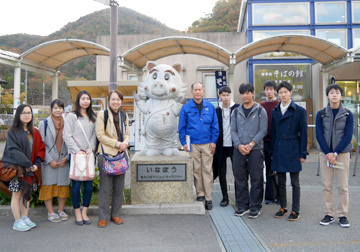
Based on quantitative analysis of the growth factors for agriculture, I have confirmed that productivity will rise based on increases in the following:
- The amount invested in R&D for agricultural disciplines that can be confirmed through data from public research institutions
- The management scale of each farming business
- The dependence on agriculture (the proportion of one farming businesses’ income from agriculture)
I’m often told that it is important to specialize and expand the scale of operations. To enable this, we need to consider multiple issues: relaxing regulations, permitting the incorporation of small family-centered farming operations, and changing the model to a high added-value industry through “Sixth Industrialization” by including agricultural processing (secondary industry), distribution and sales (tertiary industry) as well as agriculture production (primary industry). I am working on related policy advice based on academic data.
In 2012 I collaborated with residents in the town of Nose (Osaka prefecture) to carry out an attitude survey of local farmers. Around 80% of respondents are aiming to continue with their current farm management methods, but approximately 20% expressed wishes for land loans and farming trusts. I have proposed that because of Japan’s aging society, in 5 to 10 years’ time we will need an organization that facilitates the smooth integration and use of farming land that will help with agricultural mobilization and intensification (for example, a state-run agricultural corporation).
I’ve also received a proposal to carry out research in Yabu city, Hyogo prefecture, which is a designated National Strategic Special Zone for regulatory reforms regarding farming in hilly and mountainous areas. I’m currently working on surveys for agricultural entry from companies and securing human resources.
Finally I would like to ask you a question as a female researcher. Japanese universities and research institutes still only have small numbers of female researchers, and it is important to raise levels of diversity. What do you think, based on your own experiences?
Prof. Kinugasa:
I can’t deny that compared to men, women can be at a disadvantage because they may have to pause their research activities for marriage and childbirth. I myself was born locally (Hyogo prefecture) which mean that my parents could support me, and my spouse is also a researcher, so I am lucky to be in an environment where I can carry out research while raising two elementary school-age children.
However, it is vital that we improve measures for childcare facilities. I think female researchers in their thirties in non-tenured posts would worry about being able to balance giving birth and childcare on top of research. Japan needs to think about supporting female researchers more, for example by reducing the burden of university administrative duties and teaching.





